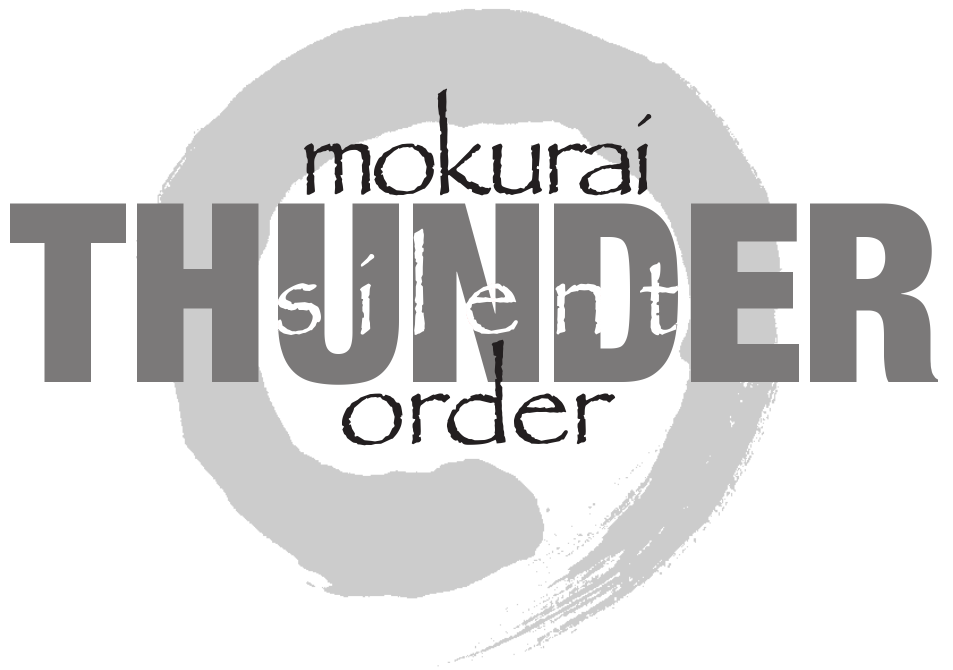“Connecting the Dots”
You probably have some familiarity with Buddhism, or even Zen. You may have read articles, or a book or two about Zen, and practiced some form of meditation. Some of you may have undergone formal training, in Zen or other meditative traditions, or you may be a relative newcomer to Zen.
The objective of this post is to clarify for yourself which teachings of Buddhism are relevant to you, to provide some background on Zen Buddhism, the importance of Zen’s unique style of meditation, and finally some approaches to integrating Zen practice into your daily life.
My approach to Zen may seem a bit different from others you may be familiar with. The reason for this is my professional training in design thinking, which influences how I see the world.
To augment more traditional text-based presentations of Zen and buddha-dharma, I have charted the basic teachings as semantic models, 3D structures flattened into 2D charts. This illustrates their interrelatedness, providing visual aids and mnemonics to help you visualize and remember them. The graphic models allow further analysis of overlapping and interconnected implications of what otherwise typically appear as linear and literary outlines in verbal form. We are literally going to connect the dots to the degree possible.
Basics of Buddhism
Zen Buddhism is both very simple and complex at the same time. As we say in design circles, “simple in concept; difficult in execution.” The amount of material available on Buddhism appears virtually endless. I am not a scholar, nor a historian, but it may be helpful to provide some background from the perspective of Zen practice, as I understand it
The 80,000-plus texts and commentaries that make up the traditional body (Skt. Tripitaka, “three baskets”) of the written record are daunting in their sheer volume, and can appear impenetrable in their density. They are also subject to wide variation and interpretation, owing to the process of translating from ancient languages and cultures into modern English and cultural idiom. Contemporary scholarship has added to the depth and scope of analyses of their meaning and relevance. Currently it is probably impossible for anyone to read everything published in English about Buddhism, or even the sub-category of Zen.
The Four Noble Truths
Our review of contemporary implications of the findings, conclusions, and recommendations that Buddha discovered in his meditation and articulated in his “First Sermon,” sometimes rendered as the “Middle Way” or “Setting in Motion the Wheel of Truth.” He unfolds a model of “Four Noble Truths.” This quartet constitutes a kind of take-it-or-leave-it description of reality, the causes and conditions of sentient existence, including the Eightfold Path, a thoroughgoing prescription for practice, covering the eight dimensions of leading a Zen life based on meditation. All of the teachings may be seen as corrective descriptions of enlightened reality and prescriptions for taking action based on the enlightened worldview.
Buddhism’s Four Noble Truths are traditionally translated as the existence of suffering, its origin in craving, the potential of cessation, and the path to follow in daily life, leading to cessation. This begs the question — What, exactly, makes them so noble, after all? They can be ennobling, but only if we embrace them. If we do, they can enable us to live a life of compassion in the context of inexorable change, or “suffering.” But they can also be considered noble analogously to the noble gases, which are chemically inert, and do not interact. The Noble Truths do not change with circumstance. They do not interact with, nor react to, changes in circumstance. They are always and only true, no matter where or when we find ourselves, in all of spacetime.
The first of the four truths is that this existence — indeed any physical existence — is of the nature of suffering (Skt. dukkha). There is no existence without change, the universal dynamic. Galaxies colliding, the Big Bang — all is dukkha. As human beings, we are caught up in this change, and we tend to take it personally. We suffer not only physically, but also emotionally, mentally, and even socially. Other sentient beings suffer, but apparently not in such a self-absorbed manner as do people.
The second truth is that most of our suffering finds its origin in, and is exacerbated by, our own attachment and aversion, craving, or thirst: clinging to the pleasant, and avoiding the unpleasant. Suffering is both natural — as in aging, sickness and death — and unnatural or intentional — as in self-inflicted and mutually-inflicted suffering between human beings, and imposed upon other beings, sentient and insentient. On a personal level, Buddhism embraces suffering, rather than trying to avoid it. But we do not ignore social injustice or ecological damage.
The third of the truths offers hope that suffering can cease, but only through our embrace of it. The natural processes of aging, sickness and death cannot be avoided no matter how hard we try. They are built into existence itself. Unnecessary and unintended suffering can come to an end, however, through relinquishing, or at least lowering, the extent of our craving, modifying our craven behavior. Even natural suffering can be mitigated, through radical acceptance.
The Noble Eightfold Path
The fourth of the quartet posits that there is a way of living daily life as a path to cessation. The usual interpretation of its eight points begins with worldview, or intention. In time our view evolves toward conformance to that taught by Buddha, through examining our thought, or understanding. “Right” view and thought together comprise right wisdom. Engaging in loving speech, kind action and a compassionate livelihood, add up to right conduct. Engaging effort, mindfulness and meditation, we develop right discipline. The only real discipline in Zen is self-discipline, in spite of its reputation for the strict monastic lifestyle of Zen monks and nuns. But the same applies to lay practice. Wisdom, conduct and discipline constitute our tripartite path.
Fortunately, Zen offers a workaround. According to my root teacher, Soyu Matsuoka-roshi, and most other teachers of Zen, living as a monastic is not necessary, and study is not as important as one’s own, direct experience in meditation. After all, words can only record the second-hand experience of others who have pursued the study of Buddhism and the practice of Zen.
The primary focus of Zen — and the overall thrust of the propagation of Zen in the West — is the practice of its highly focused method of meditation (J. zazen), integrating posture, breath and attention. Zazen is like a magnifying glass, or a prism, the indispensable and instrumental method for focusing awareness on our own direct experience. Which is where the origins of Buddhism arose, from the meditation of Buddha. Here is also the place where Zen — particularly Soto Zen — varies from other forms of Buddhism. It is known as the meditation school of Buddhism, though technically, “meditation” — meaning a subject meditating upon an object — is not actually synonymous with Zen’s “objectless meditation” (J. shikantaza), as we will see in the segment on “Differentiating Zazen.”
Visualizing the Eightfold Path as a 3-dimenional model of a cube illustrates that these eight components of the three primary divisions — the outer person, or conduct; the inner person, or discipline; and the fruit of the practice, the evolution of true wisdom — are all interconnected in complex ways. For example, the intersection of right speech and right action: “You talk the talk, but you do not walk the walk.” Your words do not match your actions. Each pairing of any two of the eight dimensions can be analyzed in such a manner. But the important thing is to be aware of them, observing how they effect our lives, and how our manner of living effects them.
Perfecting Practice
In today’s hectic environment, it is difficult to believe that meditation would offer more than a temporary relief from the pressures of living in the modern world. But Zen meditation goes deeper. Rather than simply offering a self-help regimen, it points to the very origin and meaning of our lives.
The Six Paramitas
When we think of perfecting our practice of any activity, such as playing the piano, or high-performance athletics, naturally we form some sort of goal or expectation that we hope to realize. But the notion of perfection in Zen is not like that. There is an ancient Sanskrit term, “paramita,” that is sometimes translated as “perfection.”
There are six such, sometimes expanded to ten, in traditional models. The basic six-pack usually translates as: generosity or giving; precepts or ethics; energy or effort; patience or forbearance; meditation, contemplation or concentration; and wisdom. Many teachings surround these traits, which are considered highest values in Buddhism to be developed through practice.
But in Zen, without going into detailed analysis of the paramitas, which literally connotes going to the “other shore,” or a kind of pro-and-con ethical evaluation, we instead look to discover their true meaning and application in our meditation. The founder of Soto Zen in 13th Century Japan, Master Eihei Dogen, was said to have commented, paraphrasing: In zazen, what Precept is not fulfilled?
In Zen, the perfection of desirable personality traits, and full comprehension of them, becomes possible only through diligent pursuit of wholehearted meditation practice. Matsuoka-roshi would often say that we should always aim at the perfect posture in seated meditation, never imagining that we have achieved it. This amounts to “posture paramita.” In Zen, the term is interpreted as “perfecting,” more a verb than a noun, begetting an open-ended attitude toward pursuing the ideal, without preconceiving it. We engage in a process of perfecting, in lieu of setting goals of perfection.
Eventually, with repetition, any endeavor such as practicing the piano, dance moves, sports, or martial arts forms, will reach a turning point, where it becomes truly musical, transcendent, and transformative. Your practice of meditation will likewise naturally go through several turning points in its evolution. Eventually, it will become what my teacher referred to as “the real zazen.” This is when posture, breath and attention all come together in a unified way. Not-two.
Zazen: Just Sitting; Still Enough, Straight Enough, For Long Enough
Soto Zen has been criticized historically as being a form of “quietism,” withdrawing from the world into a kind of passive, self-absorbed navel-gazing. But there is nothing quiet about the world that Zen inhabits. Whether sitting at home alone, in the classroom, or in high-speed traffic on the expressway, the alert and awake nature of the Zen mind is fully engaged.
The focus of Zen is on the present moment, but the activity that is occurring moment by moment is ceaseless, relentless in its changing dynamic. This is why Zen is so highly prized in the martial arts, and in sports, where everything is moving so fast that there is no time to think. We sit still in order to recover our original mind, in which stillness is not separate from motion. This is one meaning of an ancient Sino-Japanese term, “mokurai”: stillness in motion, motion in stillness. It also connotes that silence is thunder, and vice-versa. Silence in Zen, in other words, is not the absence of sound. The silence is in the sound. And vice-versa. Same for stillness and motion.
Nonetheless, we emphasize the stillness part, as we are usually in crazy motion, as Master Paul Simon recalls. It is difficult to slow down, let alone come to a full stop, in today’s world. When we do — sitting still enough for long enough — a whole new dimension of reality opens up for us. We enter the original frontier of the mind, discovered by Buddha two-and-a-half millennia ago, and passed on to us by the ancestors of Zen.
Concluding the Inconclusive
Like most things in life, Zen has to be experienced to be understood. But it should be mentioned that even if you do not get the blow from the stick (J. kyosaku) in the controlled conditions of the “zendo,” or meditation hall, you will get it anyway, under the uncontrolled conditions outside. We can all testify from personal experience.
This is one instance of how the highly specialized training in Zen has a halo effect on daily life. If you have become accustomed to the extreme clarity of mind engendered in quiet meditation in the zendo, you will be better equipped to face the chaos in daily life, whether behind the wheel in traffic on the expressway, in the board room, the football or military field, or at home alone.
Two aspects of Zen that I have mentioned remain foremost in my mind — its irreducible simplicity of method, and the importance of finding the right teacher for you. I highly recommend you pursue both with diligence, as if your hair were on fire, as per Master Dogen.








